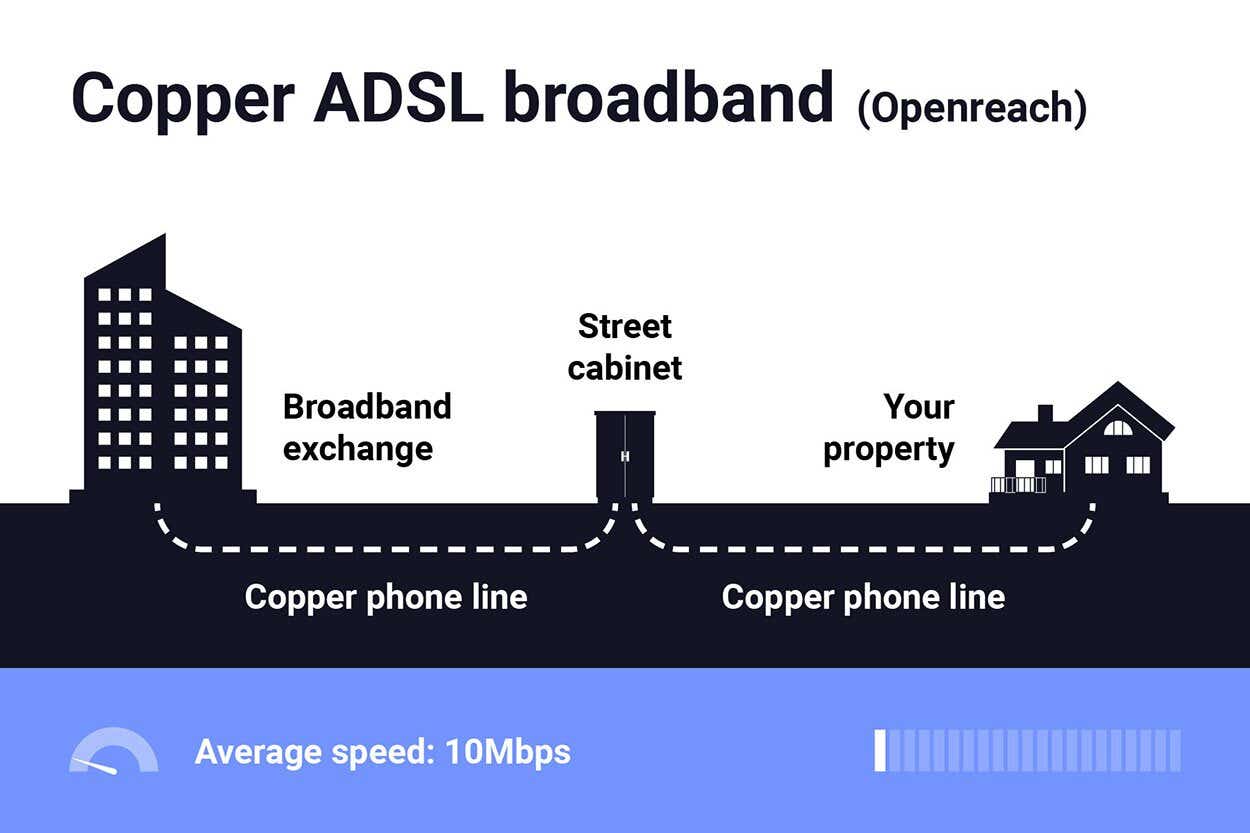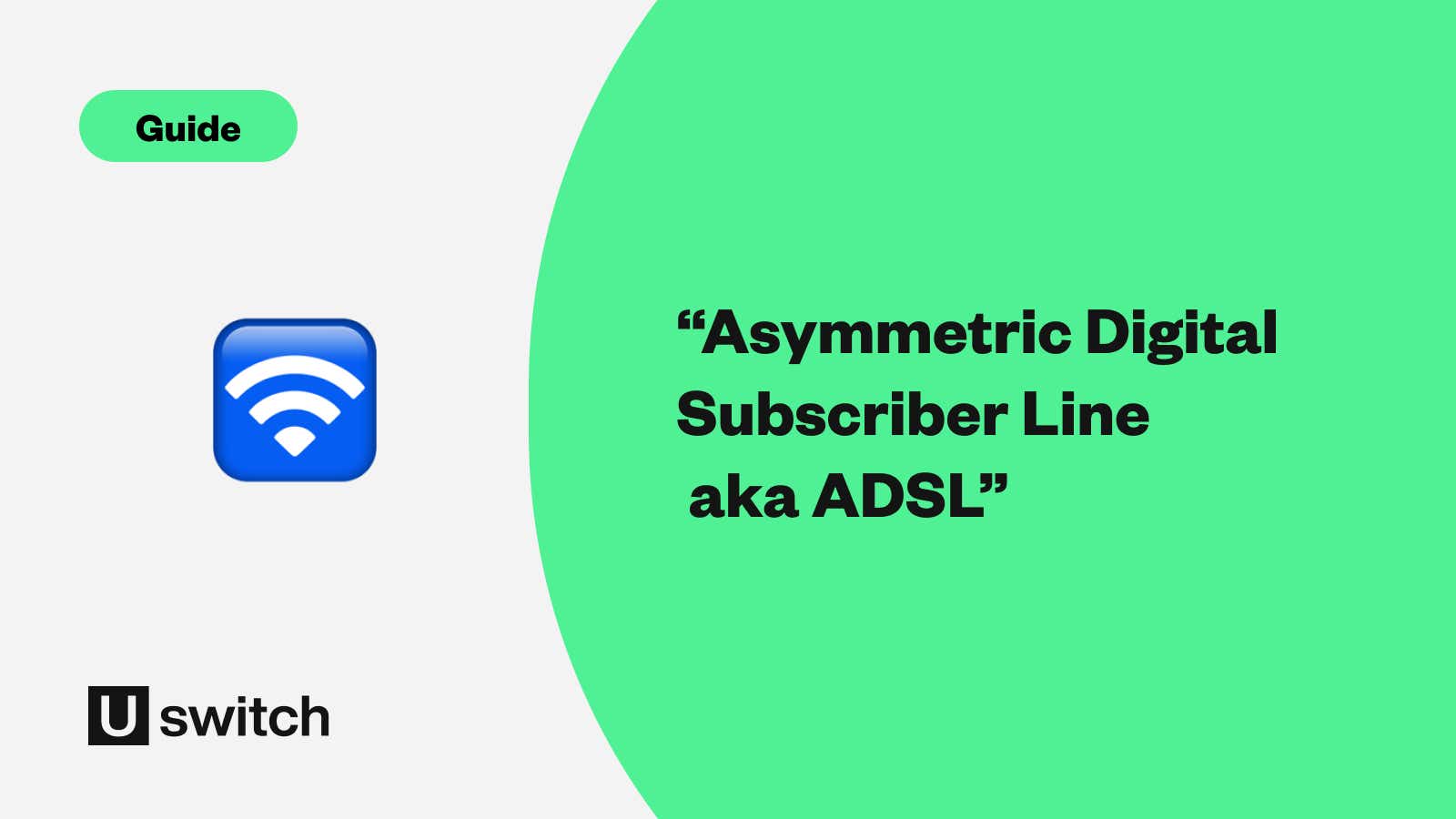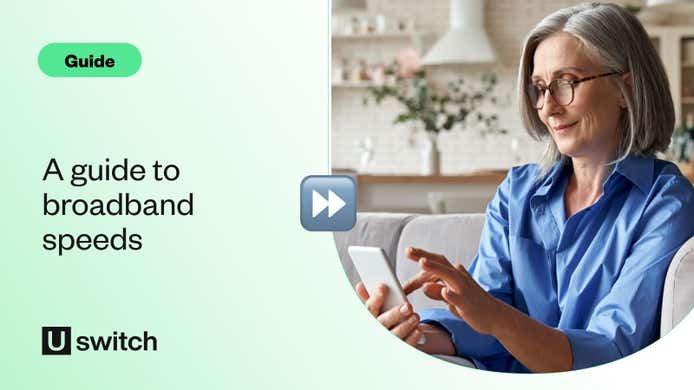ADSL stands for Asymmetric Digital Subscriber Line
ADSL broadband is a connection provided over home telephone lines. Openreach owns the UK's landline infrastructure, so to have an ADSL connection, you need to rent your phone line from Openreach. If you already have an existing phone line, the broadband is added to the package.
Openreach was previously owned by BT, but ADSL packages can be sold by providers other than BT through a process known as local loop unbundling (LLU). This means that a secondary provider, for example, Plusnet or TalkTalk, installs its own software in the telephone exchanges and rents line and exchange space from Openreach.
Although not as fast as fibre broadband, ADSL provides a high-quality, reliable connection. But if you live far away from your telephone exchange, or if the cable has degraded, then speeds can drop dramatically.
Compare all of our broadband deals — including ADSL bundles — now.
How does ADSL broadband work?

ADSL is the name given to a broadband connection which works through the copper wires of your existing phone line. Because it comes through the Openreach phone line network — which most homes are already connected to — it's the most popular type of broadband available, simply because it's so easy to sign up to and requires minimal installation in most cases.
When ADSL broadband is installed, a microfilter is plugged into your phone connection. This separates the frequency of your phone line from that of your broadband connection. It's this device that allows you to surf the web while chatting on the phone.
Almost all the major UK broadband providers offer ADSL broadband. While some of them also provide cable broadband or fibre broadband, ADSL broadband is by far the most commonly available. Nearly every home in the UK can now get ADSL broadband, so whether you live in Scotland, Wales, Northern Ireland or England, ADSL broadband is very likely available to you.
Alternatives to ADSL
Not interested in having a home telephone line at home? Don't want to pay line rental every month? The following options may be better alternatives for you to consider:
Fibre broadband, which uses fibre-optic cables to provide speeds as high as 900Mbps, depending upon your location.
4G mobile broadband uses mobile phone networks and offers speeds of up to 80Mbps.




